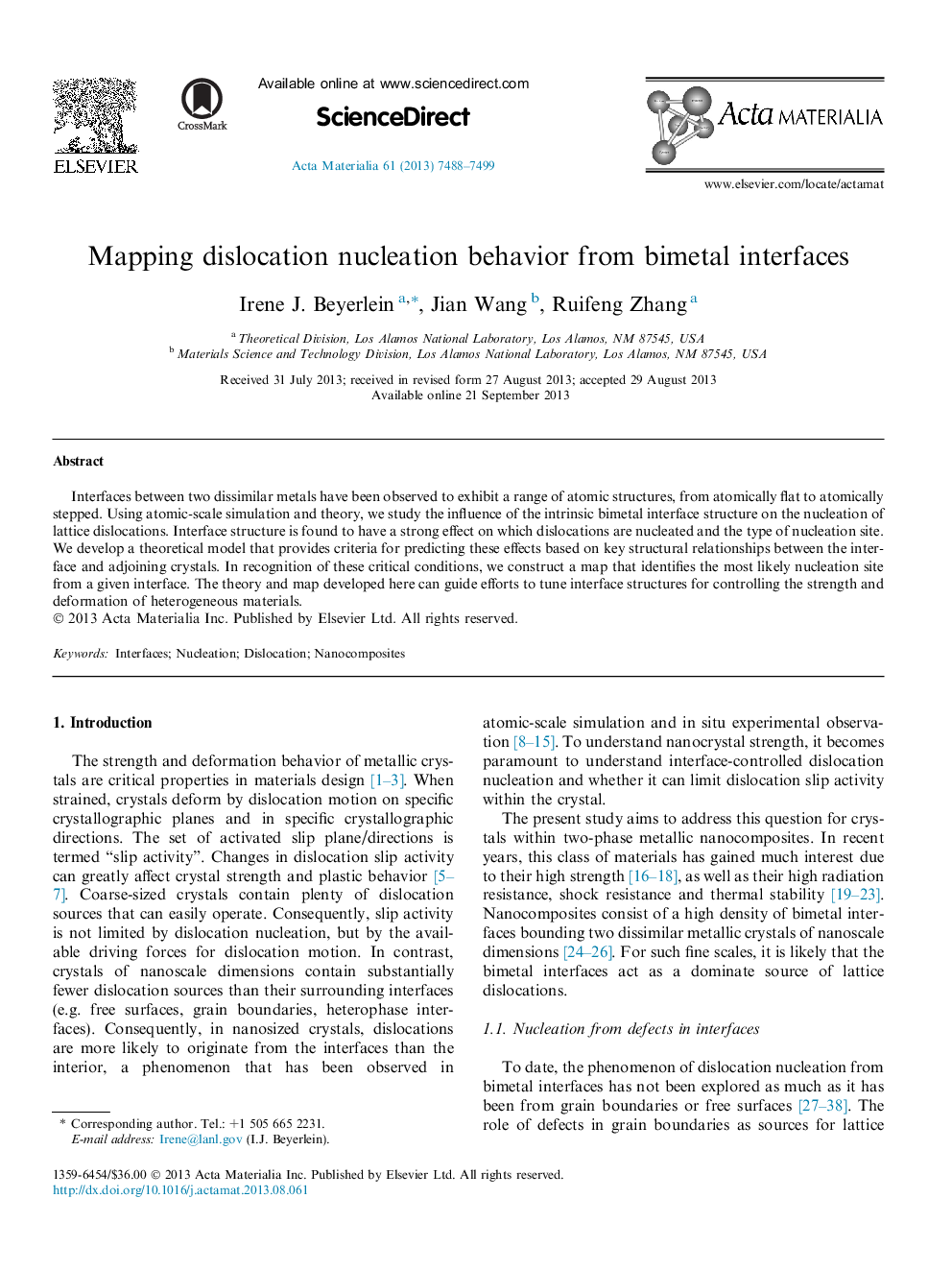| Article ID | Journal | Published Year | Pages | File Type |
|---|---|---|---|---|
| 10620259 | Acta Materialia | 2013 | 12 Pages |
Abstract
Interfaces between two dissimilar metals have been observed to exhibit a range of atomic structures, from atomically flat to atomically stepped. Using atomic-scale simulation and theory, we study the influence of the intrinsic bimetal interface structure on the nucleation of lattice dislocations. Interface structure is found to have a strong effect on which dislocations are nucleated and the type of nucleation site. We develop a theoretical model that provides criteria for predicting these effects based on key structural relationships between the interface and adjoining crystals. In recognition of these critical conditions, we construct a map that identifies the most likely nucleation site from a given interface. The theory and map developed here can guide efforts to tune interface structures for controlling the strength and deformation of heterogeneous materials.
Related Topics
Physical Sciences and Engineering
Materials Science
Ceramics and Composites
Authors
Irene J. Beyerlein, Jian Wang, Ruifeng Zhang,
